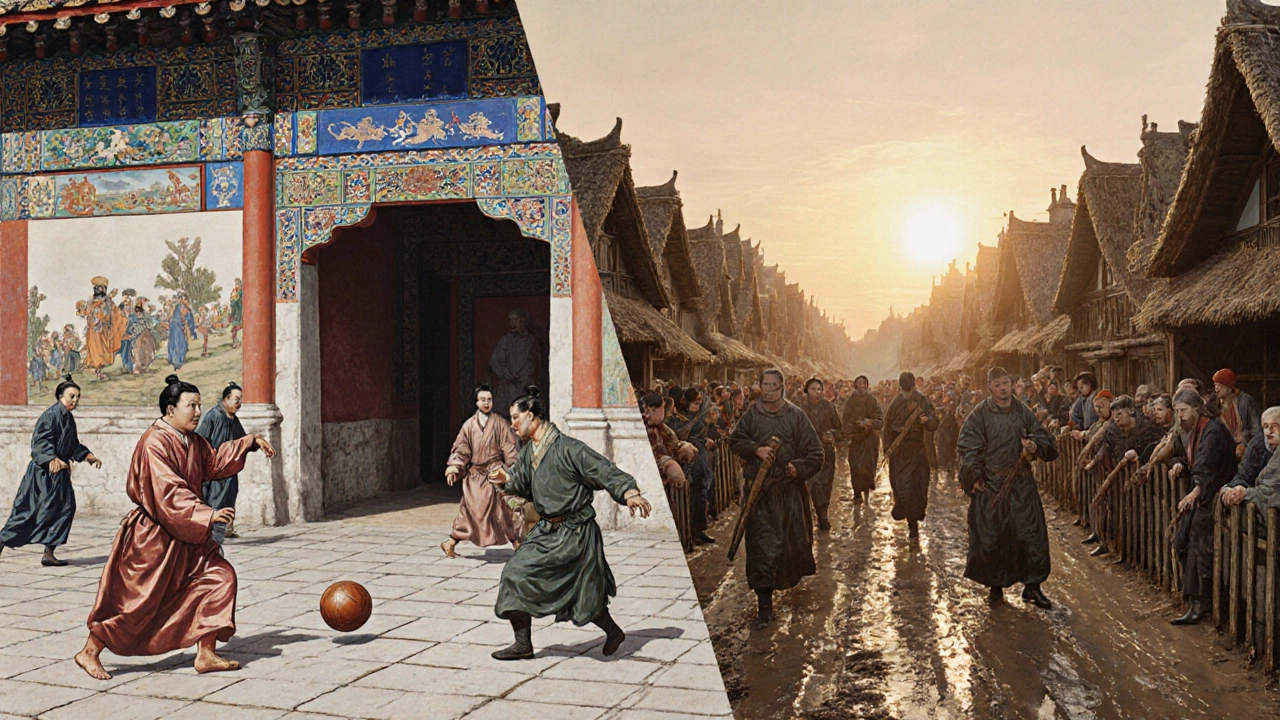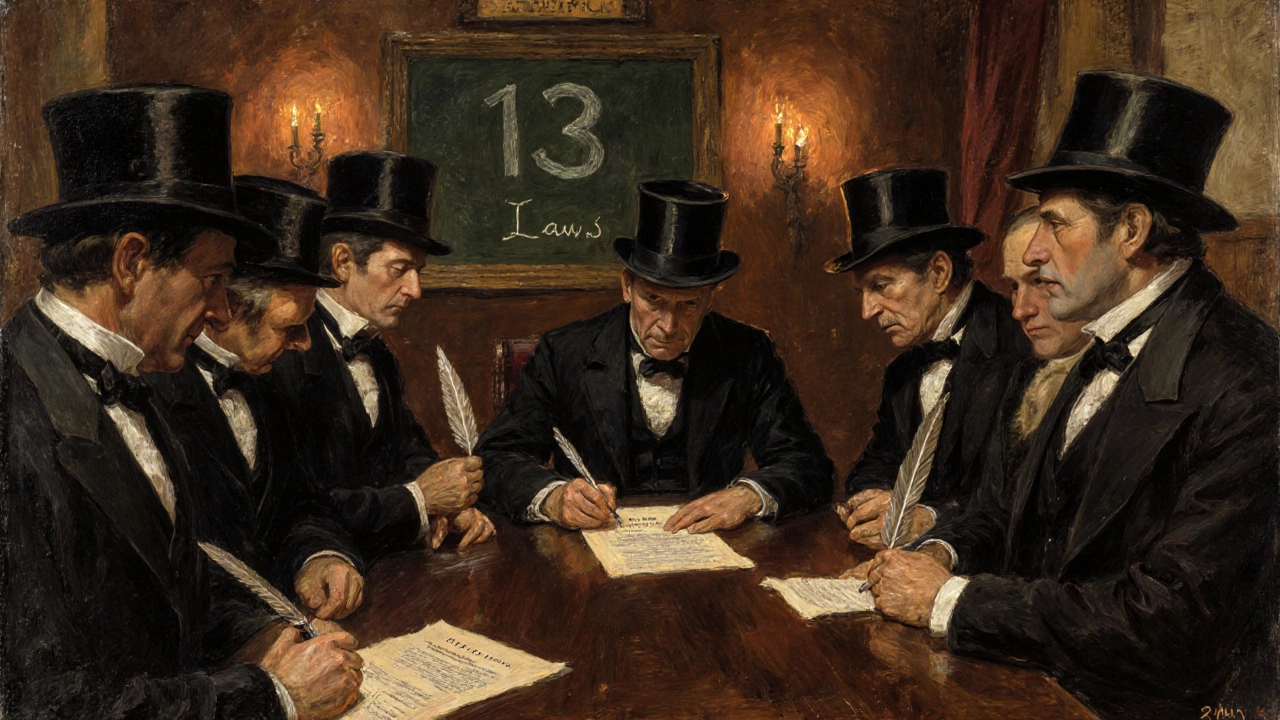Who Invented Football? History and Origins Explained

Ever wondered who actually invented football? The answer isn’t a single person but a long chain of rule‑making, clubs, and cultural shifts that turned chaotic ball games into the world‑wide sport we know today.
From Ancient Kicks to Medieval Pastimes
Ball‑kicking games have been around for millennia. The Chinese Cuju was a formalized sport in the Han dynasty (206 BC - 220 AD) that even appeared on imperial tomb walls. In medieval Europe, villagers played “mob football” on streets and fields, often with few rules and dozens of participants. These early versions set the stage, but they lacked the structure needed for organized competition.
The 19th‑Century Turning Point
Industrialisation brought schools, factories, and a growing middle class to Britain. In the 1800s, public schools like Rugby School began codifying their own versions of the game. At Rugby, a handling rule famously originated from William Webb Ellis in 1823, leading to a split between “handling” and “kicking” codes.
Cambridge Rules - The First Unified Code
In 1848, a group of students at Cambridge University drafted the Cambridge Rules. They emphasized a kicking‑only game, banned carrying the ball, and introduced a throw‑in from the touchline. Though never widely adopted at the time, the Cambridge Rules became the template for later standardisation.
Sheffield Football Club - The First Official Club
Founded in 1857, Sheffield Football Club (often called Sheffield FC) is the world’s oldest football club. Its founders, Nathaniel Creswick and William Prest, wrote the Sheffield Rules in 1858, which included innovations like corner kicks and free‑kicks for fouls. The club’s matches attracted crowds and sparked the idea that a single set of rules could govern all teams.

The Birth of the Football Association (FA)
On 26 October 1863, representatives from several London clubs gathered at the Freemasons’ Tavern and formed the Football Association. The FA’s first meeting produced a set of 13 laws that explicitly prohibited handling the ball - a direct nod to the Cambridge Rules. This moment is widely recognised as the birth of modern association football.
Key Figures Who Shaped the Game
While many contributed, two names stand out:
- Ebenezer Cobb Morley - a solicitor and captain of the Barnes Club, Morley drafted the FA’s original 13 laws and became its first secretary. His legal mind gave the game a solid framework.
- Charles Wreford‑Brown - a Cambridge alumnus who helped merge the Cambridge Rules with the FA’s code in the early 1870s, ensuring the final rules reflected broader university input.
Global Spread and the Rise of FIFA
Within a decade of the FA’s formation, clubs sprouted across England, Scotland, and Wales. The first international match - Scotland vs. England - took place in 1872, ending 0‑0 but igniting a rivalry that would fuel worldwide interest. In 1904, 13 national associations founded FIFA, cementing football’s global governance and paving the way for the World Cup debut in 1930.
Common Myths About Football’s Invention
Many people claim that a single genius “invented” football, but the reality is messier. Some myths include:
- William Webb Ellis invented football. He actually sparked rugby, not association football.
- The first FA rules were written in 1853. The FA didn’t exist until 1863; earlier rules were local club variations.
- Football began in Brazil. While Brazil popularised a flair style, the codified game originated in England.
Understanding these misconceptions helps appreciate the collaborative evolution of the sport.

Quick Timeline Checklist
| Year | Event |
|---|---|
| 1848 | Cambridge Rules drafted at Cambridge University. |
| 1857 | Sheffield FC founded - world’s oldest club. |
| 1858 | Sheffield Rules introduced, adding corner kicks. |
| 1863 | Football Association formed; 13 laws published. |
| 1872 | First official international match (Scotland vs England). |
| 1904 | FIFA created to oversee international football. |
| 1930 | Inaugural FIFA World Cup held in Uruguay. |
Why the football history Still Matters
Knowing how football was born gives fans perspective on modern debates - from VAR to player‑safety rules. Every change echoes the original quest for fair play that Morley, Wreford‑Brown, and their peers championed.
Frequently Asked Questions
Who is officially credited with writing the first football rules?
The first formal set of rules - the 13 laws - were drafted by Ebenezer Cobb Morley for the Football Association in 1863.
Was football invented before 1863?
Various ball games existed for centuries, but the codified version of association football began with the FA’s 1863 code.
What role did the Cambridge Rules play?
They provided a kicking‑only framework that heavily influenced the FA’s early laws, especially the ban on handling.
Why is Sheffield FC important?
Founded in 1857, it is the world’s oldest football club and its Sheffield Rules introduced concepts still used today, like corner kicks.
How did FIFA contribute to the sport’s growth?
Established in 1904, FIFA standardized international competition, organized the World Cup, and helped spread the game to every continent.
Wrap‑Up
Football wasn’t the brainchild of a lone inventor; it emerged from schoolyards, clubs, and visionary administrators who gradually stitched together rules that balanced freedom and fairness. By tracing the journey from ancient kicks to the FA’s 13‑law debut, we see how a chaotic pastime turned into a global phenomenon.

